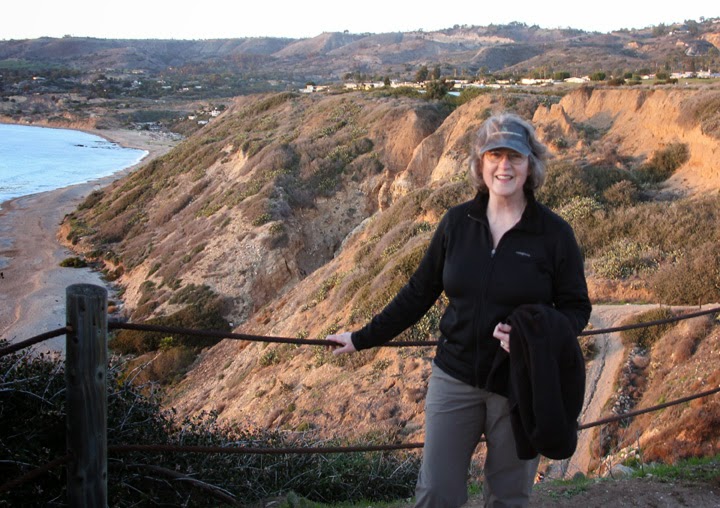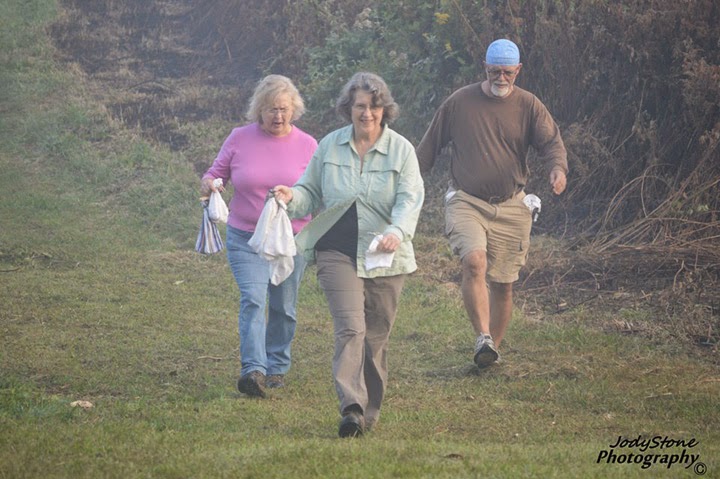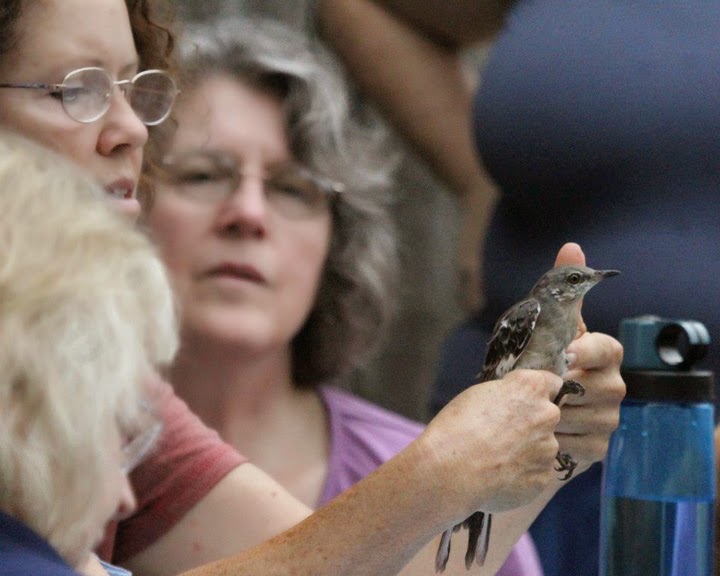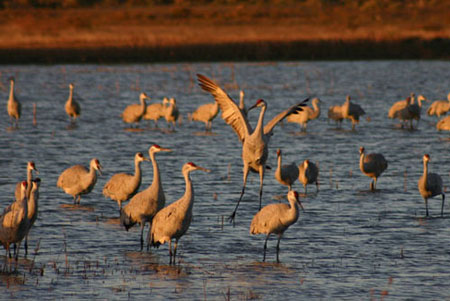"I am writing this story and it kicks me in the gut, it brings me to my knees and swells my eyes with tears. This is not an easy story to write. It is about who I was and who I am. It’s about trying to figure out what makes a good person good, trying to figure out how to fit in, how to give myself permission to be who I am--to let myself become without society or church or my neighbor or a husband, telling me who I am, what I should think, how I should act or where I should go.” Morning pages, May 12, 2008 Columbine
Columbine
 Columbine
ColumbineIsn’t that what we're all trying to do--become our truth? We tell our stories a snippet at a time, at lunch, in emails, in letters, in conversations. We tell the funny ones mostly. And then there are the deep ones, the painful ones that we save for precious moments and precious people. Telling our stories connects us to all of human kind and stories heal. They are an act of love.
I am close--less than ten pages from finishing my novel. It is a work of fiction but no matter how much fiction one creates, truths flow out. The unconscious is an amazing part of the mind and body. It is ever busy, ever working to help and to heal.
And so soon, maybe tomorrow, you may hear me singing from the tree tops and the words to the song go something like this: “it is finished, it is finished--all of it is truly finished!”

 My first reaction to reading the above quote was, “Whaaat? Those spindly little legs and feet can’t possibly swim. They aren’t even wading birds.”
My first reaction to reading the above quote was, “Whaaat? Those spindly little legs and feet can’t possibly swim. They aren’t even wading birds.” Isn’t that fascinating that blackbird young can swim, not gracefully, not immediately and not as a life time pursuit, but for a little while, so they won’t drown if they fall out of the nest into the water around them?
Isn’t that fascinating that blackbird young can swim, not gracefully, not immediately and not as a life time pursuit, but for a little while, so they won’t drown if they fall out of the nest into the water around them?
 Answers and resolutions are not always up to us. No one really knows how many failed nests occur in the natural population that remains in Wood Buffalo in Canada. And no one knows if we can reverse what is causing this disruption. It is something to watch and to ponder. My guess is (if I can be so bold), barring something environmental that is more widespread, the whooping cranes will work it out by trial and error. They, like all other species, are driven to reproduce. Just how the culture and ecology of this re-introduced group of cranes may have changed because they are captive reared by costumed humans, remains to be seen.
Answers and resolutions are not always up to us. No one really knows how many failed nests occur in the natural population that remains in Wood Buffalo in Canada. And no one knows if we can reverse what is causing this disruption. It is something to watch and to ponder. My guess is (if I can be so bold), barring something environmental that is more widespread, the whooping cranes will work it out by trial and error. They, like all other species, are driven to reproduce. Just how the culture and ecology of this re-introduced group of cranes may have changed because they are captive reared by costumed humans, remains to be seen. I wasn’t expecting him to appear so fluffy and big or have such a bright orange beak.
I wasn’t expecting him to appear so fluffy and big or have such a bright orange beak.  The song sounds like his name stretched out, ‘peeee-weeeee’ and there is a another shorter note that swings up and down that sometimes follows, ‘peeeoooo’. It’s fun to listen to these songs and try to figure out who’s singing, even if you can’t find the artist. It’s even more fun to take a break and pull up a chair under the canopy and listen until the songster takes a new perch. Then you can hone in with binoculars or your camera and get a good look. Nature springs alive when you do this. It comes closer and you find yourself more deeply connected to all your busy neighbors.
The song sounds like his name stretched out, ‘peeee-weeeee’ and there is a another shorter note that swings up and down that sometimes follows, ‘peeeoooo’. It’s fun to listen to these songs and try to figure out who’s singing, even if you can’t find the artist. It’s even more fun to take a break and pull up a chair under the canopy and listen until the songster takes a new perch. Then you can hone in with binoculars or your camera and get a good look. Nature springs alive when you do this. It comes closer and you find yourself more deeply connected to all your busy neighbors.

 Peace is evident in nature. We can feel it as we walk and in our quiet moments of stillness. We can feel it in the wind, the cool earth beneath our feet, the sun upon our face, in the drifting of the clouds. It is not that nature isn’t full of harsh realities, but that it continues, it endures and it renews. It reminds us that we can do that, too.
Peace is evident in nature. We can feel it as we walk and in our quiet moments of stillness. We can feel it in the wind, the cool earth beneath our feet, the sun upon our face, in the drifting of the clouds. It is not that nature isn’t full of harsh realities, but that it continues, it endures and it renews. It reminds us that we can do that, too.
 Our goals, our plans for the day, our choices give us direction, ground us in the day, give us opportunity to express our gifts to the world. At the same time, there is an unseen challenge that is felt by everyone--the challenge of creating a happy, peaceful heart.
Our goals, our plans for the day, our choices give us direction, ground us in the day, give us opportunity to express our gifts to the world. At the same time, there is an unseen challenge that is felt by everyone--the challenge of creating a happy, peaceful heart. Huckleberries are definitely worth the effort. But this was not your everyday woven basket nor an easy endeavor. It was a bark basket that involved wrestling with a young poplar tree, collecting the bark to shape the basket and then lacing it up with hickory strips.
Huckleberries are definitely worth the effort. But this was not your everyday woven basket nor an easy endeavor. It was a bark basket that involved wrestling with a young poplar tree, collecting the bark to shape the basket and then lacing it up with hickory strips. Also known as the American tulip tree or yellow poplar, this tree is the tallest
Also known as the American tulip tree or yellow poplar, this tree is the tallest
 Once, about seven years ago, I went out with a group of experienced birders to find migrating warblers. I had no idea what this would be like. (Mind you, seven years ago, I wasn’t quite as hardy as I am today.) On that spring morning, person after person called out the names of warblers. They named them by song. They found them in the trees. They counted them out, one by one, by one, lots of them.
Once, about seven years ago, I went out with a group of experienced birders to find migrating warblers. I had no idea what this would be like. (Mind you, seven years ago, I wasn’t quite as hardy as I am today.) On that spring morning, person after person called out the names of warblers. They named them by song. They found them in the trees. They counted them out, one by one, by one, lots of them. They are beautiful. And they are funny. And they travel thousands of miles against great odds to return to their breeding grounds in the spring. We are so very lucky to have them. --I think I may have to paint them one day soon.
They are beautiful. And they are funny. And they travel thousands of miles against great odds to return to their breeding grounds in the spring. We are so very lucky to have them. --I think I may have to paint them one day soon.

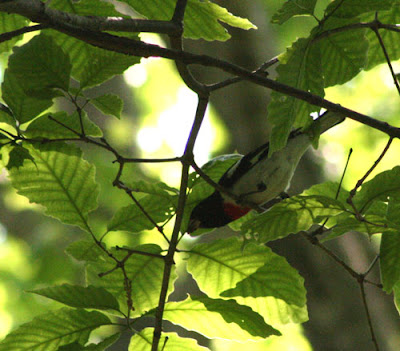 And he stayed for a while. He entertained me moving about on the branches, picking and feeding. I later came back with a chair and some real shoes. (Ants love sandals.) And this is when I also met two warblers. In all I've met four new
And he stayed for a while. He entertained me moving about on the branches, picking and feeding. I later came back with a chair and some real shoes. (Ants love sandals.) And this is when I also met two warblers. In all I've met four new 
 When I first came to the pond, I couldn’t find the frogs. I asked someone, a wise someone, “are there any frogs in your pond?” He answered, ”yes, there’s lots of them. But they’re hard to see. Just be still in one spot and pretty soon you’ll see them.” And I did. Their camouflage is so flawless they are invisible and they're expert at using it--at being still. It was like looking at a hologram and seeing something wholly different emerge.
When I first came to the pond, I couldn’t find the frogs. I asked someone, a wise someone, “are there any frogs in your pond?” He answered, ”yes, there’s lots of them. But they’re hard to see. Just be still in one spot and pretty soon you’ll see them.” And I did. Their camouflage is so flawless they are invisible and they're expert at using it--at being still. It was like looking at a hologram and seeing something wholly different emerge.  And this was the day I also met the blue dasher. And through my camera lens I began to notice the different ways he holds his wings.
And this was the day I also met the blue dasher. And through my camera lens I began to notice the different ways he holds his wings. It was by accident that I discovered the one female I saw. I wandered to another area of the pond to see what was happening over there and to find some shade. “Ah! What is this? Two salamanders mating underwater. How intimate. And whose this? A beautiful red dragon fly. What is she doing? Wow--laying her eggs.”
It was by accident that I discovered the one female I saw. I wandered to another area of the pond to see what was happening over there and to find some shade. “Ah! What is this? Two salamanders mating underwater. How intimate. And whose this? A beautiful red dragon fly. What is she doing? Wow--laying her eggs.”  I watched her, she was never still. She hovered close to the water's surface, touching it with the tip of her abdomen, depositing her eggs. Dipping up and down, touching the water, making the water ripple in rings. And sometimes when she hovered above the water, I could see the tiny eggs still falling.
I watched her, she was never still. She hovered close to the water's surface, touching it with the tip of her abdomen, depositing her eggs. Dipping up and down, touching the water, making the water ripple in rings. And sometimes when she hovered above the water, I could see the tiny eggs still falling. F
F




 Why wetlands? Wetlands are important links between bodies of water and land, where the flow of water mixes with earth’s rich nutrients and the sun’s energy, producing highly productive ecosystems that support a wide diversity of plant and animal life.
Why wetlands? Wetlands are important links between bodies of water and land, where the flow of water mixes with earth’s rich nutrients and the sun’s energy, producing highly productive ecosystems that support a wide diversity of plant and animal life. In addition to the recreational benefits that we all enjoy, wetlands work to filter out pollutants, help control flooding and support the multi-billion dollar fishing industry.
In addition to the recreational benefits that we all enjoy, wetlands work to filter out pollutants, help control flooding and support the multi-billion dollar fishing industry.




 I was truly surprised when these warblers--this one and the Blackburnian in the previous post--came so close and lingered long enough for me to catch some images, both of them on the same morning. This is one of the magical things about nature, especially birds. If you sit still for a while and listen, the birds will come to you.
I was truly surprised when these warblers--this one and the Blackburnian in the previous post--came so close and lingered long enough for me to catch some images, both of them on the same morning. This is one of the magical things about nature, especially birds. If you sit still for a while and listen, the birds will come to you. Experienced birders know these tiny birds by song. I'm a novice. I'm sure I always will be. I'm interested in everything I see out there and there's a lot to see.
Experienced birders know these tiny birds by song. I'm a novice. I'm sure I always will be. I'm interested in everything I see out there and there's a lot to see.
 Among these are the illusive woodland warblers, tiny little birds that you often hear but barely glimpse as they pass. But yesterday was an exceptional day. A Blackburnian Warbler, a striking little bird with a bright orange head, perched on a branch near me, flittered about and sang a whispery song that seemed to shake his whole body.
Among these are the illusive woodland warblers, tiny little birds that you often hear but barely glimpse as they pass. But yesterday was an exceptional day. A Blackburnian Warbler, a striking little bird with a bright orange head, perched on a branch near me, flittered about and sang a whispery song that seemed to shake his whole body.  Such a gift to our world. These are one of the many migrants that unite and brighten the globe with their journeys, in this case, as far south as southern Central America and northern South American in the winter, with some traveling as far north as Canada to summer breeding grounds.
Such a gift to our world. These are one of the many migrants that unite and brighten the globe with their journeys, in this case, as far south as southern Central America and northern South American in the winter, with some traveling as far north as Canada to summer breeding grounds. Blue Dasher (male), a species of dragonfly in the skimmer family that inhabits ponds and other still wetlands. Abdomen position helps to regulate body temperature.
Blue Dasher (male), a species of dragonfly in the skimmer family that inhabits ponds and other still wetlands. Abdomen position helps to regulate body temperature.
 And yes I did feel like I was in the fairy realm as I nearly had to stand on my head to find these lovely blossoms. I was familiar with the leaves and have seen the ripe fruit, but never the flowers. So when I spotted them, I took a peek, and there they were, fair maidens, shy and secretive.
And yes I did feel like I was in the fairy realm as I nearly had to stand on my head to find these lovely blossoms. I was familiar with the leaves and have seen the ripe fruit, but never the flowers. So when I spotted them, I took a peek, and there they were, fair maidens, shy and secretive.  The flowers grow in the fork of the stem and are often down turned and completely hidden from view by the large umbrella-like leaves. Jack Sanders, in his book, Secrets of Wildflowers, says the flowers have no nectar but their pollen is used for food by many pollinating insects.
The flowers grow in the fork of the stem and are often down turned and completely hidden from view by the large umbrella-like leaves. Jack Sanders, in his book, Secrets of Wildflowers, says the flowers have no nectar but their pollen is used for food by many pollinating insects.
 Postscript: You see that three-leafed plant to the left of the umbrella leaves in that top photo? That's poison ivy. I've managed to get through life without ever having a break-out with the tortuous rash this vine causes, so I'm knocking on wood as I type (a three-handed trick) hoping my lastest prowl in the woods will render it still ineffectual on me.
Postscript: You see that three-leafed plant to the left of the umbrella leaves in that top photo? That's poison ivy. I've managed to get through life without ever having a break-out with the tortuous rash this vine causes, so I'm knocking on wood as I type (a three-handed trick) hoping my lastest prowl in the woods will render it still ineffectual on me.
 Lyn's article, entitled "Whip-poor-wills, on the Borderland of Invisibility" is written with that same magical Bale's quality--lyrical story telling, enriched with historical and sensory detail --that has become his trademark and is fast making him one of the most sought after naturalists in our area. His book, a first publication, is destined to become a regional classic.
Lyn's article, entitled "Whip-poor-wills, on the Borderland of Invisibility" is written with that same magical Bale's quality--lyrical story telling, enriched with historical and sensory detail --that has become his trademark and is fast making him one of the most sought after naturalists in our area. His book, a first publication, is destined to become a regional classic. 







